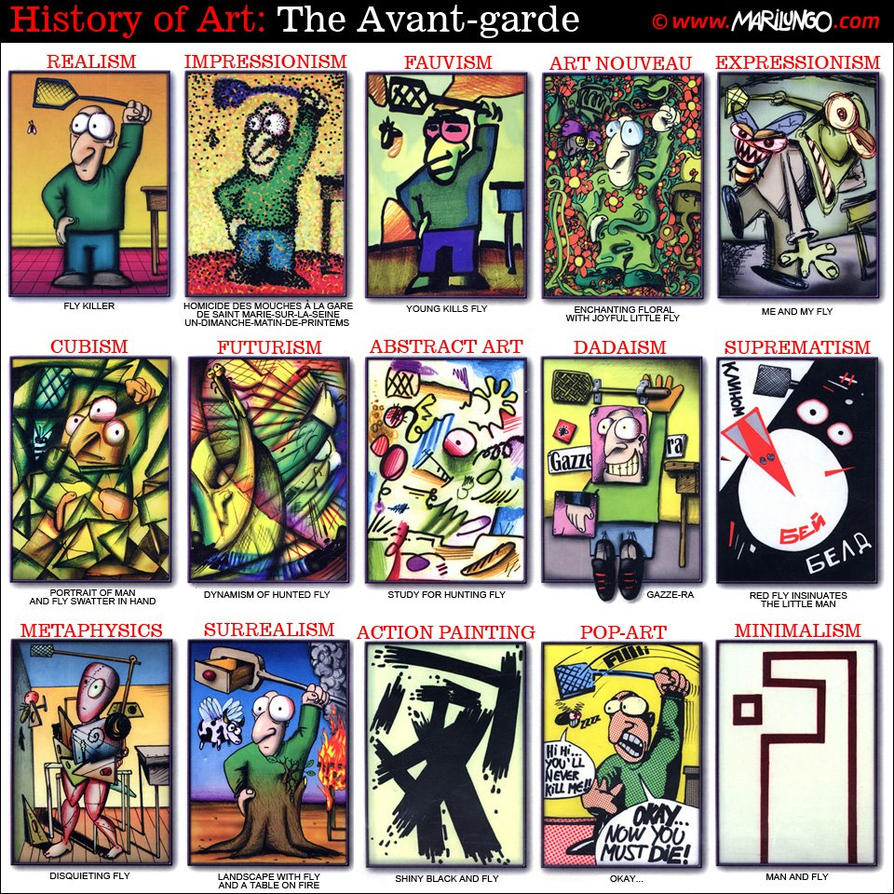Photography can be a form of art. It not always is, we are aware of that, however, sometimes it is.
A good photo is certainly defined by good framing, i.e. choice of scene, which is the artsy part of photography.
In addition to framing, the technical parts play a major role. Is my exposure right (ISO)? What about the depth of field (aperture)? Do I need motion blur (shutter speed)?
However, there is more to a good photo than the above mentioned aspects...
Art is often defined by its period... let's have a look at this great overview by Marco Marilungo (I hope I don't have to pay for linking his work into my blog):
 |
| History of Art by Marco Marilungo |
In photography, we can't really tweak the style. You photograph a building, very obviously this would be architectural photography - take an image of a scene in a busy market, that would be street photography ... etc. etc.
However, we photographers still have the title and maybe subtitle to set the mind of the viewer.
Let's have a look at a scene I shot today:
 |
| CRW_0388-1.jpg |
Well, let's have a look at the same shot with a different caption:
 | |
| Bridges between buildings |
Now let's take this a step further and play with your imagination... (do you know Latin? if not, google is your friend). Same photo:
 |
| Qua vadis? |
Besides the psychological part of photography, there is another thing to add: choose a crop that works. The original of this photo was shot in RAW (DNG) at 4:3, which represents the sensor size. Fair enough. However, sometimes, the dimensions of your sensor just wont fit the scene in term of composition.
Have a look at the scaled and jpg converted original:
 |
| CRW_388.DNG (not really DNG, since scaled and converted) |
Taking the focus on the upper part of the image: There is some really stupid looking rectangular thing on to of the building, which his has to go. Also, the sky, which was just cloudy, does not show any texture, and therefore needed to be minimized.
Further, to emphasis the stretch of the bridges, a wider format cam in handy. Hence, I went for a 16:9 image format for the final image.
Actually, when I took the shot, I already knew that I wanted to call in "quo vadis?". Sometimes such ideas come in handy... sometimes, the shot does not work out as hoped (this particular one worked out for me).
It may occur that the idea how to name a cool photograph comes in late. Take your time and imagination to think about a good title.
At the end, it is the title you give a photograph that influences the mind of the viewer.